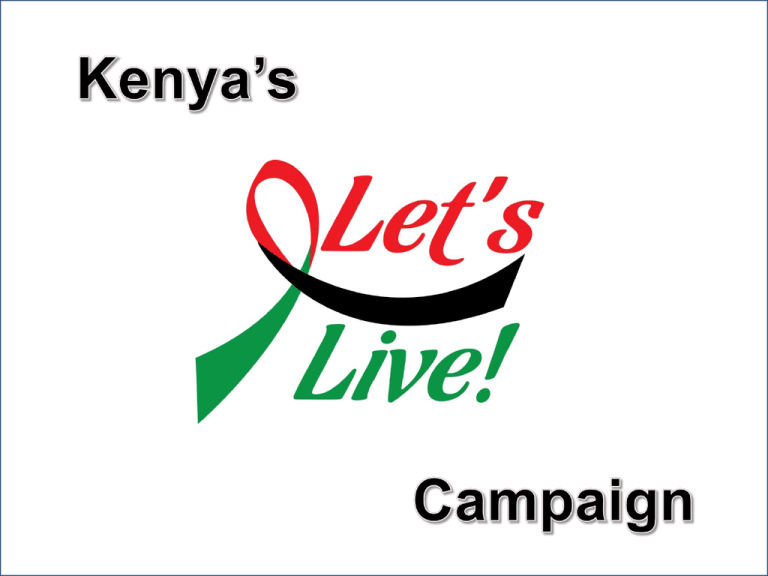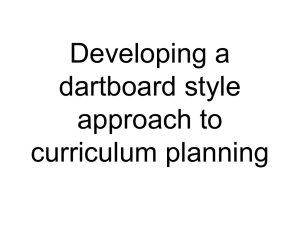Here are their findings
advertisement

Please put cell phones on “silent” or “vibrate” Wireless Internet service is available Restrooms Ask and we’ll make it happen Key positive themes Need family-centered approach Increase HF capacity before increasing demand Incentives for mothers to attend ANC/deliver at HF Need to emphasize the immediate postpartum and neonatal period, in particular follow up in the first 24-48 hours Recognize the importance of the community structures, including (retired) traditional birth attendants, chiefs, and CHW’s and referral links in successful births—build capacity at community level and ensure continuum of care; incentives to CHW Key challenges/issues Health care worker attitude Health facility/dispensary/other infrastructure needs Unintended pregnancies Address all levels of delays: seeking, reaching, and accessing care Need for better and creative transport and/or referrals Key integration themes Multisectorial approach needed Integrate/harmonize across diseases and partners and maximize use of existing platforms Define package of care/services needed—consider maternal and newborn services as a package (community and health facilities) Increase accountability Increased use of mobile technology Reproductive Health Supplies coordination Key collaboration/innovation themes Engage private sector, in particular insurance companies and consider organizational incentives Ensure/reward integration across systems and partners Stakeholder harmonization and assign organizations to specific areas of expertise HTF join Kenya Joint Mission on Reproductive Health Include maternal death as a notifiable disease Need maternity shelters and/or waiting homes All mothers should get home follow up from CHW Heat-stable oxytocin; blood substitute, misoprostol Implement Kangaroo mother care nationally Key advocacy themes Maternal and newborn health campaign Communication campaign on need for post-partum care Stakeholder meetings (like this) Key positive themes Use of mobile and other technology for training Primary caregiver education and training for nutrition and disease management Address primary disease cause (e.g., dirty water, food) Target (behavioral) interventions Incentives for immunization Proactive introduction of new vaccines (rotavirus, malaria, measles) Establish public/private partnerships Establish basic needs for every household Key challenges/ issues Financial barriers Low vaccine coverage; targeted campaigns needed; every-day clinics Need to strengthen cold chain Hours of HF; reaching children without caretakers Need to focus, otherwise can’t achieve in 1-2 year timeframe Hard to convince people to come for preventive medicine Key integration themes Multisectorial linkages and coordination Strengthen community strategy; task shift to community; CHW should be trained to vaccinate Use of GIS for resource allocation Key collaboration/innovation themes GOK leadership Avoid duplication of activities Increase inter-governmental coordination Need for more and creative transport; transportation incentives Mobile clinics/delivery of services Cost analyses Work with education sector so that teachers can identify illnesses Key advocacy themes Address cultural beliefs and norms with respect to health care seeking– causes of negative behaviors? Target right social marketing to right audience Increase leadership in community; use community leadership for community entry Public/private and civil society partnerships Champion for child health Key positive themes Linking universal testing to treatment and treatment to care, including test and treat Strengthen role of community health worker, including task shifting (e.g., adherence) Need for “watchdog” at multiple levels (GOK, partners, etc) Expanded role in technology Determine current gaps, what works, strategies for scaling-up to have greatest public health impact Key challenges and issues Stronger information systems at all levels, and monitoring outcomes Enhanced ownership and coordination of activities by GOK Task shifting and high-level buy-in by HCW and professional bodies Need increased focus on quality of services Linkage between community and health facilities and demand creation Key integration themes Basic and expanded package and linkage of care for men, women and children – no missed opportunities – at both health facility and community level Minimize overlap and duplication of activities Increased use of outreach services for hard-to-reach populations Identify, share, and implement best practices Key collaboration/innovation themes Intersectorial collaboration, e.g. UN World Food Program, private sector Social event (male involvement) Need to link HIV programs with cancer registry program Scale-up workplace programs Co-funding of programs Key advocacy themes Advocacy around professional bodies and high cadres of practitioners Engage media Address stigma via multiple avenues, including mental health, and in HCW Community empowerment to hold GOK and other stakeholders accountable Address cultural beliefs and practices to promote appropriate health-seeking behaviors Engage champions at all levels Key positive themes Identify highest morbidity and mortality cancers Focus on early detection Enhance national and regional cancer registries Enhance monitoring tools; include cancer in HMIS Administer HPV vaccine Secure private sector engagement Focus on WHO “Best Buys” for progress Add other cancers ie Burkitt’s Lymphoma Need for palliative care/friendly hospice care Strengthen referral services Key challenges/ issues Increasing knowledge without increased access to diagnosis and treatment Need to leverage resources before national campaign Ensure the campaign does not overlook other cancers Key integration themes Need multisectorial approach Focus on cross-cutting prevention strategies that benefit other cancers and NCD’s Integration with other services, work on existing platforms and networks Creative health financing Conduct inventory with other organizations Key collaboration/innovation themes Use other country strategies and tailor to our context Use community models that have worked for other diseases Need central coordination using model of NASCOP Great ideas for simple solutions (cervical cancer detection) Key advocacy themes Advocacy at community level, using existing structures Increase awareness of cancers and screening sites/modalities Use social media (facebook)- focus on those not yet started smoking (youth) Counter myths and do not scare Use survivors as advocates Have advocacy be specific Advocate in schools (early)









